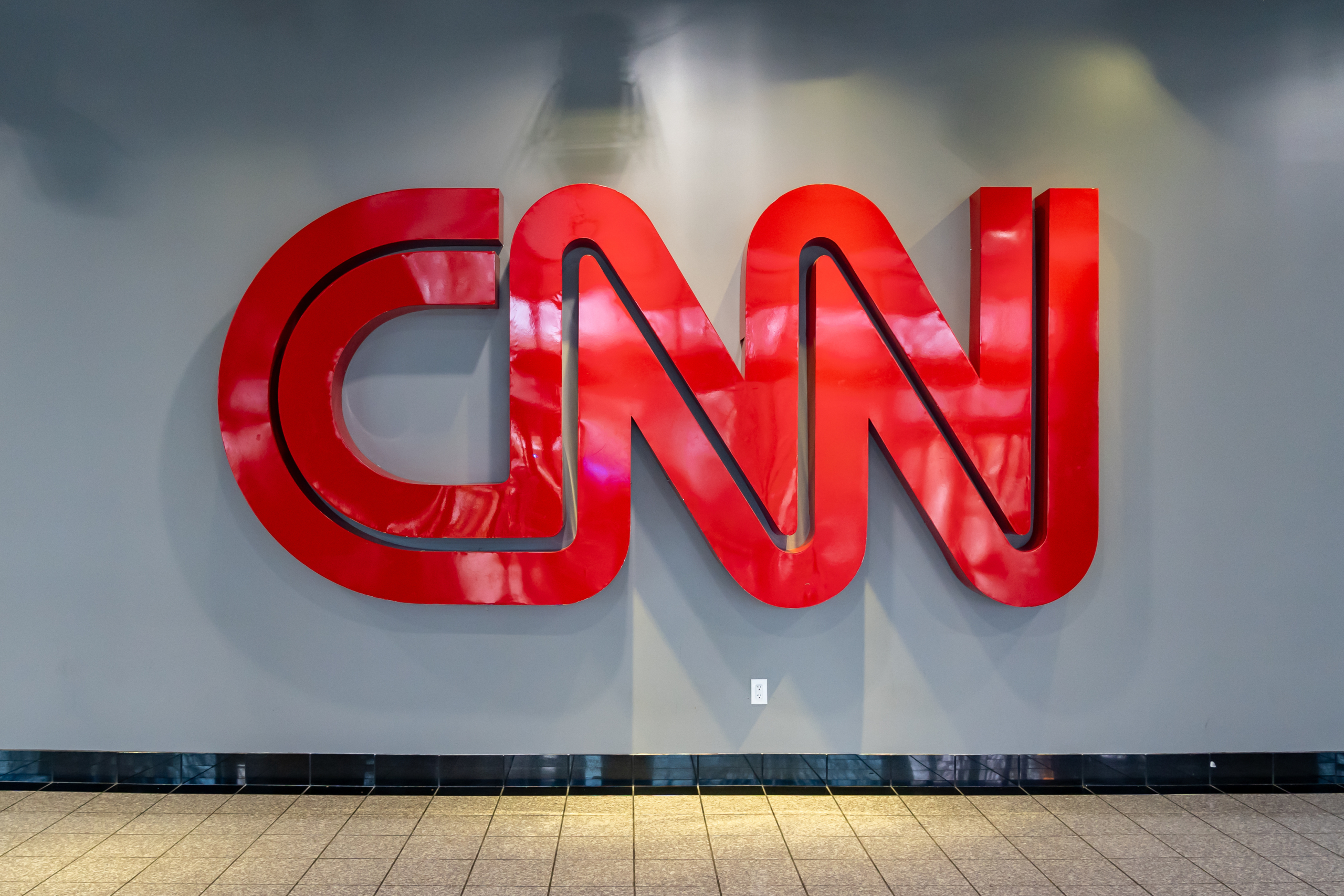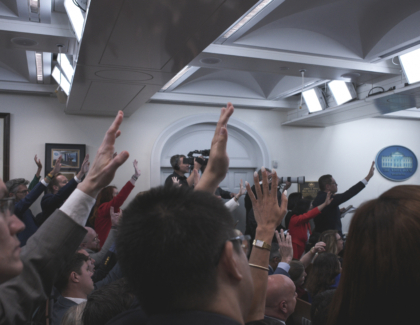Sign up for the daily CJR newsletter.
Washington weather report: “In a flurry of activity that is happening almost too swiftly to follow,” per CNN, “Trump is giving his critics every reason to think their worst fears for his new presidency will be realized and worse.” Back at CNN headquarters, there was other news in the air: a major restructuring that will cut about two hundred jobs focused on the company’s television programming and put about as many to work on digital products and services. “Recruiting the right people will take some time,” Mark Thompson, the CEO, wrote in a memo to the staff, “but we hope to open up and fill at least 100 new posts in the coming months to help execute the new plans.” He told the New York Times, “This is a moment where the digital story feels like an existential question. If we do not follow the audiences to the new platforms with real conviction and scale, our future prospects will not be good.”
The announcement was the clearest articulation yet of plans that Adam Piore wrote about for CJR over the summer, in a story that laid out the myriad challenges facing Thompson, as ratings have been down and the losses severe. David Zaslav—the CEO of Warner Bros. Discovery, CNN’s corporate parent—had recruited Thompson based on his successful record of digital transformation at the Times. “This global disruption is being felt by everyone,” Zaslav told investors. “It’s a challenge. It’s a transition.” But what that would mean—and the extent of Zaslav’s willingness to invest in Thompson’s vision—remained murky.
What we know now is that when Thompson and Alex MacCallum—whom he brought on to oversee CNN’s digital efforts—made their appeals to Zaslav, he committed seventy million dollars this year. High on the priority list is vertical video suitable for mobile viewing; according to the Times, CNN’s aim is to eventually publish between fifty and a hundred of these videos per day. In October, CNN debuted a paywall; this week, the company previewed a new streaming service and introduced “CNN’s first lifestyle-oriented digital product”; Thompson also told the Times about plans for a swipeable video news offering: “You can use your thumb to flick from a CNN news story to a CNN anchor to a reporter,” he said. “That’s a really interesting experiment.” Viva TikTok.
“The changes,” Thompson wrote to staff, “are part of an ongoing response by this great news organization to profound and irreversible shifts in the way audiences in America and around the world consume news.” Fair enough—though that leaves many of the company’s journalists, around 6 percent, out in the cold, as the Trump flurry continues. (“An unwelcome but inevitable part of the change process,” per Thompson.) Not quite freezing, but at least out of the warmth of daytime is Jim Acosta, a leading journalistic antagonist of Trump 1.0, whose 10am daily slot will be taken over by Wolf Blitzer (moved forward from the early evenings) and Pamela Brown, despite Acosta’s fairly strong ratings. Oliver Darcy reported recently for Status that Acosta would be moved to midnights (the “graveyard shift”); according to the Times, he’s still in talks about a new role. The shuffling suggests, at least, that for all the talk of digital reinvention, CNN is still a TV network preoccupied with TV network things.
Indeed, as Piore wrote for CJR, the network’s strong association with TV broadcasting presents a challenge to charting a digital course. Brent Magid, a media consultant, told him that millennial and Gen Z audiences tend to view anchors as “bobbleheads.” Piore wondered: “Can that be overcome, at scale, with pithy clips?” A CNN staffer harbored similar concerns. “The big revenue driver for CNN was always TV and cable subscriptions,” the staffer told Piore. “You are not going to make enough money from digital to offset the kind of money you were making even a few years ago in linear TV. You’re just not. So it’s not a TV versus digital situation as much as it is a shrinking news organization situation.” You can revisit Piore’s whole piece here.
Other notable stories:
- According to Benjamin Mullin, of the New York Times, a round of layoffs also began at NBC News yesterday; the network is reportedly eliminating around forty positions, with those affected being invited to apply for a dozen or so open roles. Elsewhere in the media business, Allen Media Group laid off at least fifty meteorologists from around two dozen of its local TV stations this week; Deadline’s Denise Petski has more on the emotional goodbyes some of them have offered on air. Chicago Public Media, the nonprofit owner of both the public radio station WBEZ and the Chicago Sun-Times, is offering voluntary buyouts at both outlets; journalists won’t be affected at the former but will be at the latter. In more hopeful news, Brier Dudley, of the Seattle Times, reports on a bipartisan bill in Washington State that would fund news by taxing software companies.
- In media-related news out of Trump’s Washington, Dave Levinthal reports, for The Ankler, that while Trump bashed the media during his presidential run, his campaign and affiliated PACs paid for subscriptions to more than sixty-five news outlets, roughly double the figure for Kamala Harris. Claire Heddles reports, for NOTUS, that the failed 2022 congressional campaign of Karoline Leavitt, the new White House press secretary, owes hundreds of thousands of dollars in unpaid debts, mostly to donors “who appear to have donated above the legal limits.” For Nieman Lab, Kate Wright assesses Trump’s odds of being able to install Kari Lake as the new head of Voice of America. And Wired’s Makena Kelly compiled a “who’s who of MAGA influencers you should know about.”
- For Vanity Fair, Andrew Fedorov checked in with the hosts of Chapo Trap House, the podcast of the so-called “dirtbag left,” to find out how they see the current moment. “After Trump coasted to reelection victory on a series of endorsements from podcasts appealing to young men, most prominent among them Joe Rogan’s,” liberal pundits “began pining for a Rogan type who could, presumably, sway a young, male electorate into voting Democratic.” For Will Menaker, a cohost, however, “the Democrats’ problem was their message, not its medium,” Fedorov writes. Menaker pointed out to him that “Joe Rogan was the Joe Rogan of the left back when he endorsed Bernie Sanders.”
- CJR’s Lauren Watson examines how the press in Canada might fare under a government led by Pierre Poilievre, a conservative politician seen as likely to become prime minister by the end of the year. Already, “Poilievre has revealed an aggressive agenda, with the press in his sights,” Watson writes. “Most notable has been his vow to slash the federal allotment for the Canadian Broadcasting Corporation by a billion dollars.” He also appears poised to slash public support for private outlets, arguing recently that the media should “make money winning eyeballs and earlobes.”
- And the AP’s Laurie Kellman and Hillel Italie explored how officials, mapmakers, and the media are responding to Trump’s directives renaming the Gulf of Mexico as the “Gulf of America” and Denali, the mountain in Alaska, as Mount McKinley. The AP itself, whose style guidelines are widely followed across the news business, intends to keep referring to the Gulf of Mexico by its original name, though it will “acknowledge” Trump’s change and go along with Mount McKinley, since the mountain lies solely in the US and “Trump has the authority to change federal geographical names within the country.”
Has America ever needed a media defender more than now? Help us by joining CJR today.







